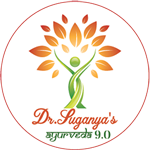FREQUENTLY ASKED QUESTIONS
“AYURVEDA” is made up of two words-Ayuh and Veda. Ayuh means life and Veda means knowledge or science. Thus “AYURVEDA’ in totality means ‘Science of life’. It incorporates all aspects of life whether physical, psychological, spiritual or social. What is beneficial and what is harmful to life, what is happy life and what is sorrowful life; all these four questions and life span allied issues are elaborately and emphatically discussed in Ayurveda. It believes the existence of soul before birth and after death too.
Ayurveda, the ancient most health care system originated with the origin of universe. With the inception of human life on earth Ayurveda started being applied. The antique vedic texts have scattered references of Ayurvedic Remedies and allied aspects of medicine and health. Atharva-veda mainly deals with extensive Ayurvedic information. That is why Ayurveda is said to be the off shoot of Atharva Veda.
As per Ayurveda, ‘Health’ is a state of equilibrium of normal functions of doshas, Dhatus, malas and Agni with delighted body, mind and soul. It means that when Dosh-Dhatu-Malas and Agni are constantly in a state of functional equilibrium, then the health is maintained. Otherwise distortion of the equilibrium results into diseases. Erratic lifestyle is believed to be one of the basic causes behind the failure of mechanism of maintaining equilibrium.
Treatment either with or without drugs and application of specific rules of diet, activity and mental status as described, disease wise, brings back the state of equilibrium i.e. health.
Diagnostic procedures in Ayurveda are two pronged; one is aimed to establish the state and type of pathology and second to decide the mode of treatment tobe applied. The former implies examination of the patient and make different investigations to diagnose the disease entity. Inspection, palpation, percussion and interrogation are the main modes of physical examination. The second type of examination is to assess the strength and physical status of the individual so that accordingly the type of management required could be planned. For this examination of Prakriti (Body constitution), Saar (Tissue quality), Samhnan (physique), Satva (Mental strength), Satamya (specific adaptability), Aaharshakti (diet intake capacity), Vyayaam shakti (exercise capacity) and Vaya (age) is done. On the basis of this examination the individual is decided to be having Pravar bal (excellent strength), Madhyam Bal (moderate strength) or Heen Bal (low strength).
If not indicated otherwise by the attending physician, Ayurveda Medicines can generally be taken along with allopathic medicines. Moreover, Ayurveda Medicines are used as adjuvant to allopathic medicines in most of chronic and degenerative diseases. As such there is no harm to consume simple herbal formulations of Ayurveda even without the prescription of the doctor but mineral based medicines must be used after due consultation and advice of the doctor.
